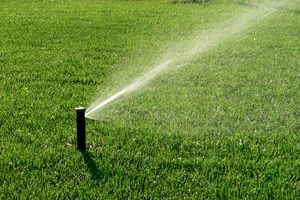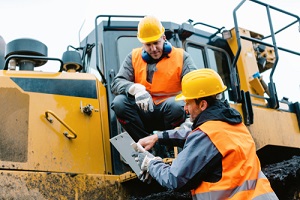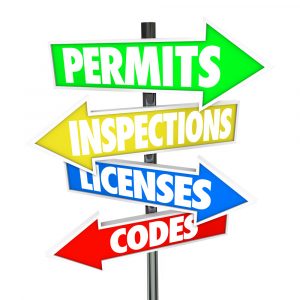5 Effective Techniques for Brush Removal: Uncover the Secrets to a Pristine Landscape!
 Are you tired of battling with unruly brush in your landscape? Do you want to reclaim your outdoor space and reveal a pristine landscape? Look no further! In this article, we will uncover five proven methods to tackle brush removal, letting you take control of your property and create a beautiful scenery you can enjoy.
Are you tired of battling with unruly brush in your landscape? Do you want to reclaim your outdoor space and reveal a pristine landscape? Look no further! In this article, we will uncover five proven methods to tackle brush removal, letting you take control of your property and create a beautiful scenery you can enjoy.
From overgrown shrubs to invasive plants, brush can quickly turn your yard into a wild jungle. But don’t worry; we will share expert tips on how to remove brush effectively. Learn how to remove brush without damaging the surrounding plants or trees and how to prevent regrowth.
Whether you are a seasoned gardener or a beginner, these techniques are for everyone. We will guide you through each step, providing practical advice and highlighting potential pitfalls to avoid. Get ready to transform your landscape into a stunning haven with our tried-and-true brush removal techniques. Let’s get started!
The Importance of Brush Removal in Maintaining a Pristine Landscape
Maintaining a pristine landscape means paying attention to detail, and removing brush is crucial. Brush, including overgrown shrubs, weeds, and invasive plants, can quickly turn a neat yard into an unmanageable jungle. Left unchecked, brush can harm your landscape by crowding out desirable plants, reducing sunlight and air circulation, and even creating a fire hazard.
Removing brush keeps your landscape beautiful, helps your plants grow properly, and makes your yard safer. A well-kept landscape enhances the curb appeal of your property and provides a serene space for you and your family to enjoy. By addressing brush issues, you can unlock the true potential of your outdoor space and create a landscape you can be proud of.
Technique 1: Manual Brush Removal Using Hand Tools
 Manual brush removal involves using hand tools to cut, uproot, or clear away unwanted vegetation. While labor-intensive, it’s precise and effective for small to medium-sized areas. Use tools like pruning shears, loppers, or handsaws to target individual plants without harming surrounding vegetation.
Manual brush removal involves using hand tools to cut, uproot, or clear away unwanted vegetation. While labor-intensive, it’s precise and effective for small to medium-sized areas. Use tools like pruning shears, loppers, or handsaws to target individual plants without harming surrounding vegetation.
Removing brush by hand lets you address the root system of plants, preventing regrowth. This approach is great for persistent or deep-rooted species. Though demanding, manual removal can be satisfying as you see the transformation of your landscape. It’s also a good way to involve family members in maintaining your property.
Technique 2: Mechanical Brush Removal Using Brush Mowers or Brush Cutters
For larger or more overgrown areas, mechanical brush removal is efficient. Overgrowth mowers and brush cutters can quickly clear dense plants. Thicket mowers, also called rotary or flail mowers, can handle thicker, woody plants. Shrub cutters are handheld tools useful for hard-to-reach areas.
Mechanical removal is fast and effective for large properties or frequent brush clearing. Using this equipment, you can reclaim your outdoor space with minimal effort, making it an excellent choice for big jobs.
Technique 3: Chemical Brush Removal Using Herbicides
 Chemical herbicides can be necessary for stubborn or deep-rooted brush species. Herbicides target and kill unwanted vegetation from the root up. When used correctly, they are effective and efficient, especially for invasive species or large, overgrown areas.
Chemical herbicides can be necessary for stubborn or deep-rooted brush species. Herbicides target and kill unwanted vegetation from the root up. When used correctly, they are effective and efficient, especially for invasive species or large, overgrown areas.
However, caution is needed. Improper use can harm desirable plants, contaminate soil, and pose health risks. Carefully select the right herbicide, follow all safety guidelines, and apply it precisely to minimize damage to your landscape.
Technique 4: Controlled Burns for Brush Removal
Controlled burns can effectively remove brush by burning away unwanted growth. This technique is useful for large, dense areas of brush. The fire’s heat eliminates vegetation, and the resulting ash enriches the soil.
Controlled burns require expertise and careful planning. Improper execution can cause uncontrolled fires and pose safety risks. Work with professionals or local fire departments to ensure safety. Controlled burns target plant roots, preventing regrowth and promoting a healthier ecosystem.
Technique 5: Hiring Professional Brush Removal Services
 For challenging brush removal or a hands-off approach, hiring professionals is effective. They have the expertise, equipment, and resources to handle tough projects. Professionals understand different brush species and the best removal techniques. They use advanced tools like brush mowers and stump grinders.
For challenging brush removal or a hands-off approach, hiring professionals is effective. They have the expertise, equipment, and resources to handle tough projects. Professionals understand different brush species and the best removal techniques. They use advanced tools like brush mowers and stump grinders.
Hiring professionals ensures safety and compliance with regulations. They handle hazardous materials and follow safety protocols, protecting your family and the environment. Professionals provide a thorough and efficient brush removal service, saving you time and effort.
 Factors to Consider When Choosing the Right Brush Removal Technique
Factors to Consider When Choosing the Right Brush Removal Technique
The best brush removal technique depends on several factors. Consider the size and density of the brush, the species present, the terrain, and your preferences and resources. Manual removal is practical for small areas, while mechanical or chemical methods suit larger, overgrown spaces.
Think about the type of brush and the accessibility of the area. Inaccessible areas may require mechanical equipment or controlled burns. Your comfort level with tools and chemicals also matters. If unsure, hiring professionals might be the best option.
Safety Precautions and Guidelines for Brush Removal
 Safety is crucial in brush removal. Use appropriate personal protective equipment (PPE) like gloves, long pants, and eye protection for manual removal. Follow the manufacturer’s instructions for mechanical equipment and wear hard hats, ear protection, and steel-toed boots.
Safety is crucial in brush removal. Use appropriate personal protective equipment (PPE) like gloves, long pants, and eye protection for manual removal. Follow the manufacturer’s instructions for mechanical equipment and wear hard hats, ear protection, and steel-toed boots.
For herbicides, follow label instructions and wear chemically resistant gloves and goggles. Dispose of leftover herbicide safely. For controlled burns, work with professionals to prevent fires from getting out of control. Always be aware of potential risks and take necessary precautions.
Maintaining a Brush-Free Landscape: Preventive Measures and Ongoing Maintenance
Keeping your landscape brush-free requires ongoing effort. Address the root causes of brush growth, such as soil health and irrigation patterns. Regularly inspect your property for new brush growth and address issues promptly. Use a combination of manual removal, herbicides, and mechanical methods to keep vegetation in check.
Consider planting desirable, low-maintenance species that suppress brush growth. Implement landscaping features like mulch to prevent unwanted vegetation. A comprehensive approach ensures your landscape remains pristine and beautiful.
Creating a Low-Maintenance Garden: Tips and Tricks
A low-maintenance garden saves time and effort. Start by choosing plants that thrive locally. Use mulch to keep weeds down and retain moisture. Group plants with similar water and sunlight needs together. Install drip irrigation to save water and make watering easier. Finally, add hardscaping elements like stones or gravel to reduce lawn space.
Best Native Plants for Landscaping in Virginia and Maryland
 Native plants are perfect for your garden as they adapt well to the local climate. Great options for Virginia and Maryland include Black-eyed Susans, Virginia Bluebells, and Eastern Redbuds. These plants need less water and care because they thrive naturally here. Choosing native plants supports local wildlife and creates a beautiful, sustainable garden.
Native plants are perfect for your garden as they adapt well to the local climate. Great options for Virginia and Maryland include Black-eyed Susans, Virginia Bluebells, and Eastern Redbuds. These plants need less water and care because they thrive naturally here. Choosing native plants supports local wildlife and creates a beautiful, sustainable garden.
How to Build and Maintain a Thriving Vegetable Garden
To build a thriving vegetable garden, choose a sunny spot with good soil. Add compost and organic matter to the soil. Plant a variety of vegetables like tomatoes, peppers, and lettuce. Water regularly, especially during dry spells. Monitor for pests and use natural methods to control them. Harvest your vegetables when they are ripe and enjoy fresh produce all season.
Seasonal Landscaping Tips for Virginia and Maryland Homeowners
Each season requires different landscaping tasks. In spring, clean up debris and plant new flowers. Summer needs regular watering and mowing. In fall, rake leaves and prepare plants for winter. During winter, protect plants from frost and add mulch to insulate the soil. Follow these tips to maintain a beautiful yard year-round.
Effective Watering Techniques for a Lush Lawn
 Watering your lawn correctly keeps it lush and green. Water early in the morning to reduce evaporation. Aim for about one inch of water per week, including rainfall. Use a sprinkler system or a soaker hose for even coverage. Avoid overwatering to prevent fungus and other problems. These techniques will keep your lawn healthy and beautiful.
Watering your lawn correctly keeps it lush and green. Water early in the morning to reduce evaporation. Aim for about one inch of water per week, including rainfall. Use a sprinkler system or a soaker hose for even coverage. Avoid overwatering to prevent fungus and other problems. These techniques will keep your lawn healthy and beautiful.
DIY Home Improvement Projects to Boost Curb Appeal
Improving your home’s curb appeal doesn’t have to be expensive. Paint your front door a bright color. Add new house numbers and a mailbox for a fresh look. Plant colorful flowers along your walkway. Install outdoor lighting to highlight your garden. These simple DIY projects can make a big difference.
Cost-Effective Ways to Renovate Your Home’s Exterior
 Renovating your home’s exterior can be affordable. Pressure wash the siding to make it look new. Paint the trim to freshen up the appearance. Add shutters to your windows for charm. Plant a few trees or bushes to enhance the landscape. These cost-effective changes can transform your home.
Renovating your home’s exterior can be affordable. Pressure wash the siding to make it look new. Paint the trim to freshen up the appearance. Add shutters to your windows for charm. Plant a few trees or bushes to enhance the landscape. These cost-effective changes can transform your home.
Choosing the Right Materials for Your Patio or Deck
Choosing the right materials for your patio or deck is crucial. Wood looks great but needs regular maintenance. Composite materials cost more but last longer and need less care. Stone or brick pavers provide a natural look and are very durable. Consider your budget and how much maintenance you want to do.
The Benefits of Installing a Home Irrigation System
 A home irrigation system saves time and water. It waters your plants evenly, keeping your garden healthy. Automated systems can be set to water at the best times. This prevents overwatering and reduces your water bill. Installing an irrigation system makes gardening easier and more efficient.
A home irrigation system saves time and water. It waters your plants evenly, keeping your garden healthy. Automated systems can be set to water at the best times. This prevents overwatering and reduces your water bill. Installing an irrigation system makes gardening easier and more efficient.
How to Plan and Execute a Successful Home Addition
Planning a home addition requires careful steps. First, decide how you will use the new space. Set a budget and hire a reliable contractor. Get the necessary permits before starting. Stay involved in the project and communicate with your contractor regularly. With good planning, your home addition will be a success.
Understanding the Excavation Process: What Homeonwer Need to Know
 Understanding the excavation process is crucial for homeowners starting a construction project. First, clear the area of any obstacles. Next, professional excavators dig according to your project’s plan. They remove soil and rocks to prepare the foundation. Always ensure safety measures are in place. Finally, proper excavation sets the stage for a successful build.
Understanding the excavation process is crucial for homeowners starting a construction project. First, clear the area of any obstacles. Next, professional excavators dig according to your project’s plan. They remove soil and rocks to prepare the foundation. Always ensure safety measures are in place. Finally, proper excavation sets the stage for a successful build.
How to Prepare Your Property for a Major Construction Project
Preparing your property for construction is essential. First, get all the required permits from local authorities. Next, clear the site of any structures or debris. Mark utility lines to prevent accidents. Set up temporary fencing for safety. Finally, communicate regularly with your contractor to ensure everything is ready to go.
The Importance of Proper Drainage in Construction Projects
 Proper drainage is vital for any construction project. Without it, water can damage your foundation. Install drains to direct water away from the structure. Use gravel and pipes to improve water flow. Check that the land slopes correctly to avoid water pooling. Good drainage prevents long-term issues and maintains the building’s integrity.
Proper drainage is vital for any construction project. Without it, water can damage your foundation. Install drains to direct water away from the structure. Use gravel and pipes to improve water flow. Check that the land slopes correctly to avoid water pooling. Good drainage prevents long-term issues and maintains the building’s integrity.
Building Retaining Walls: Techniques and Best Practices
Building retaining walls requires specific techniques. First, choose the right materials, like concrete or stone. Excavate the area and lay a solid foundation. Stack the materials carefully, ensuring each layer is level. Install proper drainage behind the wall to prevent water buildup. These best practices create a strong, durable retaining wall.
Grading and Site Preparation: Ensuring a Solid Foundation
 Grading and site preparation ensure a solid foundation. Start by clearing the land of debris. Next, level the ground using proper grading techniques. This helps prevent water damage. Compact the soil to provide stability. These steps are essential for a strong and lasting foundation for your construction project.
Grading and site preparation ensure a solid foundation. Start by clearing the land of debris. Next, level the ground using proper grading techniques. This helps prevent water damage. Compact the soil to provide stability. These steps are essential for a strong and lasting foundation for your construction project.
Sustainable Landscaping Practices for a Greener Yard
Sustainable landscaping helps create a greener yard. First, choose native plants that need less water and care. Next, use mulch to retain soil moisture and prevent weeds. Install a drip irrigation system to save water. Finally, compost yard waste to enrich your soil naturally. These practices make your yard eco-friendly and beautiful.
How to Compost at Home: Benefits and Steps
 Composting at home is easy and beneficial. First, choose a compost bin and place it in your yard. Add kitchen scraps, like fruit and vegetable peels, and yard waste, like leaves and grass clippings. Turn the compost regularly to speed up decomposition. Over time, you’ll get rich, organic compost to improve your soil.
Composting at home is easy and beneficial. First, choose a compost bin and place it in your yard. Add kitchen scraps, like fruit and vegetable peels, and yard waste, like leaves and grass clippings. Turn the compost regularly to speed up decomposition. Over time, you’ll get rich, organic compost to improve your soil.
Using Rainwater Harvesting Systems for Your Garden
Rainwater harvesting systems can save water and help your garden. First, set up a rain barrel to collect water from your roof. Use this water to irrigate your plants during dry periods. Rainwater is free of chemicals, making it better for your garden. This system helps conserve water and supports a healthy garden.
Creating a Wildlife-Friendly Garden
 Creating a wildlife-friendly garden benefits nature and your yard. First, plant a variety of native flowers and shrubs. Provide water sources, like bird baths or small ponds. Avoid using pesticides, which can harm wildlife. Finally, add bird feeders and nesting boxes. These steps create a welcoming habitat for wildlife.
Creating a wildlife-friendly garden benefits nature and your yard. First, plant a variety of native flowers and shrubs. Provide water sources, like bird baths or small ponds. Avoid using pesticides, which can harm wildlife. Finally, add bird feeders and nesting boxes. These steps create a welcoming habitat for wildlife.
Benefits of Using Organic Mulch and Fertilizers
Using organic mulch and fertilizers boosts your garden’s health. Organic mulch helps retain soil moisture and suppress weeds. It also breaks down to enrich the soil. Organic fertilizers provide nutrients without harmful chemicals. These benefits promote stronger plant growth and a healthier garden.
Essential Safety Tips for DIY Landscaping Projects
 Safety is crucial for DIY landscaping projects. First, always wear protective gear like gloves and goggles. Use the right tools for each task. Follow instructions carefully when using power equipment. Keep children and pets away from work areas. Take breaks to avoid fatigue. These tips ensure your project is safe and successful.
Safety is crucial for DIY landscaping projects. First, always wear protective gear like gloves and goggles. Use the right tools for each task. Follow instructions carefully when using power equipment. Keep children and pets away from work areas. Take breaks to avoid fatigue. These tips ensure your project is safe and successful.
How to Safely Remove Large Trees and Shrubs
Removing large trees and shrubs safely requires planning. First, check for power lines and utilities. Use proper tools like saws and shovels. Cut branches gradually from the top down. Always have someone nearby to assist. Dispose of debris properly. These steps help you remove trees and shrubs safely.
Maintaining Your Yard Equipment: A Comprehensive Guide
 Maintaining your yard equipment keeps it in good condition. First, clean tools after each use. Sharpen blades regularly to ensure efficiency. Check for rust and oil moving parts. Store equipment in a dry place. Follow the manufacturer’s maintenance guidelines. Regular care extends the life of your equipment.
Maintaining your yard equipment keeps it in good condition. First, clean tools after each use. Sharpen blades regularly to ensure efficiency. Check for rust and oil moving parts. Store equipment in a dry place. Follow the manufacturer’s maintenance guidelines. Regular care extends the life of your equipment.
Pest Control Tips for a Healthy Garden
Keeping pests away ensures a healthy garden. First, identify common garden pests. Use natural predators like ladybugs to control pests. Remove damaged plants promptly. Use barriers like nets to protect crops. Apply organic pesticides if needed. These tips keep your garden healthy and pest-free.
Preventing Soil Erosion on Your Property
 Preventing soil erosion protects your property. First, plant ground cover to hold soil in place. Use mulch to reduce runoff. Build terraces on slopes to prevent erosion. Install retaining walls where needed. Redirect water flow with proper drainage. These methods help keep your soil intact.
Preventing soil erosion protects your property. First, plant ground cover to hold soil in place. Use mulch to reduce runoff. Build terraces on slopes to prevent erosion. Install retaining walls where needed. Redirect water flow with proper drainage. These methods help keep your soil intact.
How Landscaping Can Increase Your Property Value
Landscaping can boost your property value significantly. First, plant attractive flowers and shrubs. Keep the lawn well-maintained and green. Add features like pathways or lighting. A beautiful yard makes your home more appealing to buyers. Investing in landscaping offers great returns.
Preparing Your Home’s Exterior for Sale
 Preparing your home’s exterior for sale is essential. First, clean the siding and windows. Repaint where necessary to give a fresh look. Plant colorful flowers to add curb appeal. Fix any broken fixtures, like gutters or lights. These steps create a welcoming first impression for potential buyers.
Preparing your home’s exterior for sale is essential. First, clean the siding and windows. Repaint where necessary to give a fresh look. Plant colorful flowers to add curb appeal. Fix any broken fixtures, like gutters or lights. These steps create a welcoming first impression for potential buyers.
The Role of Landscaping in Rental Property Management
Landscaping plays a crucial role in managing rental properties. First, keep the lawn neat and trimmed. Add low-maintenance plants to reduce upkeep. Ensure walkways and entrances are clear and safe. A well-landscaped property attracts and retains tenants, making management easier.
Creating a Pet-Friendly Yard: Tips for Dog Owners
 Creating a pet-friendly yard ensures your dog’s safety and happiness. First, install secure fencing to keep your pet contained. Provide shady areas for cooling off. Use pet-safe plants and avoid toxic ones. Add a designated potty area to keep the yard clean. These tips create a safe and enjoyable space for your dog.
Creating a pet-friendly yard ensures your dog’s safety and happiness. First, install secure fencing to keep your pet contained. Provide shady areas for cooling off. Use pet-safe plants and avoid toxic ones. Add a designated potty area to keep the yard clean. These tips create a safe and enjoyable space for your dog.
Managing Large Properties: Best Practices for Landowners
Managing large properties requires strategic planning. First, divide the land into manageable sections. Use appropriate machinery for maintenance. Hire reliable help if needed. Implement sustainable practices like composting and rainwater harvesting. Regular inspections help identify and address issues early. These practices ensure smooth management of large properties.
Designing a Beautiful and Functional Outdoor Living Space
 Designing an outdoor living space can be fun and rewarding. First, plan areas for seating, dining, and relaxation. Use durable, weather-resistant furniture. Add lighting for evening use. Incorporate plants and flowers for beauty. Install pathways to connect different areas. These steps create a beautiful and functional outdoor space.
Designing an outdoor living space can be fun and rewarding. First, plan areas for seating, dining, and relaxation. Use durable, weather-resistant furniture. Add lighting for evening use. Incorporate plants and flowers for beauty. Install pathways to connect different areas. These steps create a beautiful and functional outdoor space.
How to Install and Maintain a Backyard Pond or Water Feature
Installing a backyard pond adds charm to your yard. First, choose a suitable location with enough sunlight. Dig the hole and line it with a pond liner. Add a pump to keep the water clean. Place rocks and plants around the pond for a natural look. Regularly check and clean the pump to maintain your pond.
Building and Caring for a Greenhouse in Your Backyard
 Building a backyard greenhouse helps you grow plants year-round. First, choose a sunny spot for the greenhouse. Assemble the frame and cover it with clear panels. Install ventilation to control temperature. Water plants regularly and monitor for pests. A well-maintained greenhouse can thrive in any season.
Building a backyard greenhouse helps you grow plants year-round. First, choose a sunny spot for the greenhouse. Assemble the frame and cover it with clear panels. Install ventilation to control temperature. Water plants regularly and monitor for pests. A well-maintained greenhouse can thrive in any season.
The Benefits of Xeriscaping for Water Conservation
Xeriscaping conserves water and creates a beautiful garden. First, choose drought-tolerant plants that need less water. Use mulch to retain soil moisture. Group plants with similar water needs together. Install a drip irrigation system to save water. These practices make your garden eco-friendly and easy to maintain.
Incorporating Edible Landscaping into Your Garden Design
 Edible landscaping combines beauty and function. First, plant fruit trees and berry bushes. Add vegetable beds among your flowers. Use herbs as ground cover or borders. Choose plants that thrive in your climate. This approach provides fresh produce and enhances your garden’s appearance.
Edible landscaping combines beauty and function. First, plant fruit trees and berry bushes. Add vegetable beds among your flowers. Use herbs as ground cover or borders. Choose plants that thrive in your climate. This approach provides fresh produce and enhances your garden’s appearance.
Top Landscaping Trends in Northern Virginia and Maryland
Landscaping trends in Northern Virginia and Maryland are exciting. Native plants are popular for their low maintenance. People love adding outdoor kitchens and fire pits for entertaining. Sustainable gardening practices are on the rise. Vertical gardens and green walls add beauty in small spaces. These trends make yards more functional and beautiful.
Local Landscaping Regulations and Permits: What You Need to Know
Knowing local landscaping regulations and permits is important. First, check with your county’s planning office. Certain projects need permits, like building a deck or installing a fence. Follow zoning laws to avoid fines. Get approval before making significant changes. Staying informed ensures your project goes smoothly.
Popular Landscaping Services in Fairfax and Surrounding Counties
Many landscaping services are available in Fairfax and nearby counties. Services include lawn care, tree trimming, and garden design. Hardscaping, like patios and walkways, is also popular. Irrigation system installation helps keep your garden healthy. Hiring professionals can enhance your yard’s appearance and value.
Community Gardening Projects in Your Area

Community gardening projects bring neighbors together. They provide shared spaces for growing fruits and vegetables. Volunteers help plant, maintain, and harvest crops. These gardens often donate produce to local food banks. Joining a community garden is a great way to learn and give back.
Local Resources for Homeowners: Nurseries, Landscaping Companies, and More
Homeowners have many local resources for landscaping. Visit nurseries for a variety of plants and gardening advice. Landscaping companies offer design and maintenance services. Home improvement stores sell tools and materials. Joining local gardening clubs provides support and ideas. These resources help you create and maintain a beautiful yard.
Conclusion: Achieving a Pristine Landscape Through Effective Brush Removal Technique
Maintaining a pristine landscape is challenging but rewarding. Use the five brush removal methods – manual removal, mechanical clearing, chemical treatment, controlled burns, and professional services – to tackle your brush problems. Choose the best technique for your landscape’s needs and characteristics.
Brush removal requires ongoing maintenance to prevent regrowth. Implement preventive measures, monitor your landscape, and maintain it regularly. With the right tools and techniques, you can transform your outdoor space into a beautiful sanctuary for you and your family to enjoy.
Maximizing Landscape Health with Regular Brush Removal
Maintaining a pristine landscape is not just about aesthetic appeal; it’s about ensuring the health and safety of your outdoor space. Regular brush removal is essential to prevent overgrowth, which can crowd out desirable plants, reduce sunlight and air circulation, and even pose fire hazards. Whether you’re dealing with overgrown shrubs, invasive species, or dense underbrush, choosing the right brush removal technique is crucial. Manual removal, mechanical clearing, chemical treatments, controlled burns, and professional services each have their strengths depending on the size and type of brush. By understanding these methods and implementing them effectively, you can reclaim your landscape, making it a safer, more beautiful place for you and your family to enjoy.
Ready to Transform Your Landscape? Contact Us Today!
Thank you for exploring these top brush removal techniques with us. We hope these methods inspire you to transform your yard into a beautiful, well-maintained space. For personalized assistance or to tackle larger projects, don’t hesitate to reach out. Use our “Request A Quote!” form next to this blog, and let us help you create the pristine landscape you’ve always envisioned.
Summary

Dirt Connections was started with one goal in mind: providing quality residential and commercial construction services to clients on time and on budget. Reach out for more information on how we can support your next project.
For your convenience our estimates are free and by appointment. Call 703-940-9949 for a free estimate today!










































